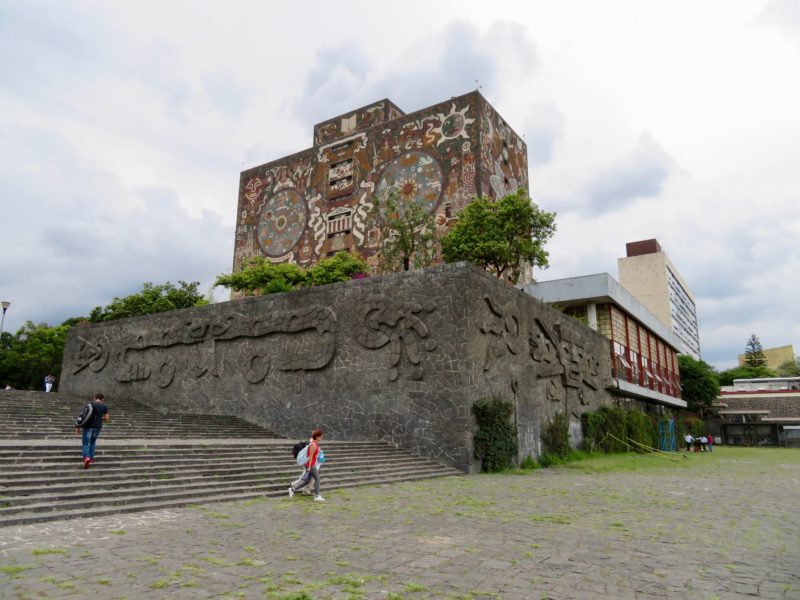
Murals have a long tradition in Mexican art, and no Mexican muralist is better known than Diego Riviera, Diego María de la Concepción Juan Nepomuceno Estanislao de la Rivera y Barrientos Acosta y Rodríguez to be precise. The man was as large in life (or larger) as his name was long. As a committed Marxist who belonged to the Mexican Communist party, his work was a paradigm of class consciousness and social commitment.

His choice of subjects, depictions of the history of Mexico, revolutionary struggle, capitalist exploitation, and hagiography of the Soviet Union led to much controversy both inside and outside of the art world.
His art was influenced by Mexican history, both in terms of what he depicted and how he depicted it, his style deeply influenced by pre-columbian culture. European modern masters can be intuited in his work as well, and it is executed in Italian fresco style which suited one of his biggest goals: public accessibility—the opposite of what he regarded as the elitist character of paintings in galleries and museums. His murals can be found in all kinds of public buildings and universities, both in Mexico and here in the US where he helped to revive funding for public art in the 1930s (Franklin Roosevelt’s Federal Art Project of the Works Progress Administration.)

His amorous (and tortured) relationships with women, chief among them Frida Kahlo, have always appealed to the chattering classes. He must have had enormous charm and seductive powers that women who easily could have been his daughters fell for this 230 pound man. I think, though, we should concentrate on his art – the most magnificent example I photographed at the the Palacio Nacional in CDMX.

The History of Mexico is overwhelmingly large, beautiful and smart. The scenes melt into each other from the very beginnings of Mayan and Aztec culture to the arrival of the catholic church and Spanish conquistadores, to the politics of the Western powers through the world wars. You could stay and look at it for a week, and not get all the details.



History is taught to the school kids who are attentively listening

unless they’re not…..

And there are smaller murals throughout the palace, and tempting views of legislative chambers – before you know it half the day is gone.

I would like to acknowledge another important muralist as well, David Alfaro Siqueiros. Also a social realist painter, and also deeply entrenched in the communist party (he’s claimed to have participated in an assassination attempt on Troztky and his entourage) he developed his own style, seen here in murals from the Autonomous University of Mexico. Wikipedia tells me that Siqueiros participated in the first ever Mexican contingent at the XXV Venice Biennale exhibition with Orozco, Rivera and Tamayo in 1950, and he received the second prize for all exhibitors, which recognized the international status of Mexican art.


now a world heritage site

Here is a good summary https://www.theguardian.com/artanddesign/2013/jun/29/mexican-modernism-politics-paint-rivera
I sought their graves in one of Mexico City’s largest cemeteries, walking by guards who were deeply ensconced in a game of dice and seemingly stoned out of their heads to judge by the smell of the surrounding clouds. Unfortunately that did not keep one of them from running after me and yelling, once he discovered I was taking photographs of the “Rotonda de las Personas Ilustres” at the Panteón Civil de Dolores.

I had gotten a couple of shots and was on my way to explore the whole place only to be shushed back to where I came from. But here are Riviera and Siqueiros, respectively.




May they rest in peace.






Deb Meyer
Thanks so much for sharing, I love vicariously traveling with you! I would love to go and visit that beautiful City.
Tricia
Lovely post today. Thank you.